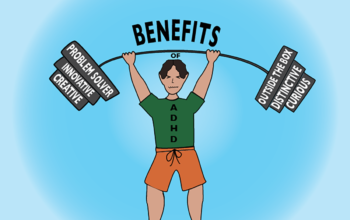Jillian Augustine, Senior Editor
@jillaugcourant
As the end of the summer approaches and the difference in temperatures between the air and surface of the sea increases, we find ourselves in the midst of what is called “Atlantic Hurricane Season.” This peak in aggressive weather is known to specifically take place in September, showing that Hurricane Harvey is right on time, followed closely behind by Hurricane Irma.
Hurricane Harvey touched down near Rockport, Texas, on August 25th, as a Category 4 Hurricane. Since then, it again landed in Cameron, Louisiana, devastating the Gulf Coast along the entire way.

However, it is not only the 132 mile per hour winds that are causing extreme damage to homes, stores, streets, trees, and more in the area. Along with the hurricane came rainfall that nearly beat the previous record of rainfall due to natural disasters in the United States.
Houston, Texas, has been getting the worst of the storm, with rain totaling up to 52 inches in some spots.
As of September 12th, Harvey has received the blame for at least 70 deaths in the Texas area. Many other are injured and left homeless and possessionless.
In Florida, residents are beginning to return to their homes and assess the damage in the aftermath of Hurricane Irma.
Irma formed on August 30th, 2017, near the Cape Verde Islands off of Africa, and made its way across the North Atlantic, growing stronger as it progressed. The hurricane touched down in Cuba and made its way through the Caribbean as a category 5 hurricane. It had already been the cause of 60 fatalities before it landed in Florida.
Hurricane Irma landed in Cudjoe Key, Florida on September 10th, and left 2.6 million homes without power. There are 12 fatalities reported from Florida so far.
One of the major differences between Harvey and Irma is that prior to Hurricane Irma, 6.5 million

Floridians were evacuated, while there was no call for evacuation in Texas before Harvey hit.
New Canaan High School alum Chiara Rapuano, who went to school this fall at the University of Tampa, was evacuated from her school and returned to New Canaan to wait for the storm to pass. Chiara said, “It was stressful—people booking flights were paying upwards of $1600 for a one-way ticket just to get out of Florida. I’m so lucky I could get home.”
However, some of Chiara’s peers were not so lucky. “Two of my roommates could not get out so they were just stuck in Florida waiting for the worst to come.”
Chiara estimates that out of her school’s population of 10 thousand, about 100 were left on campus. All of them survived the storm, and now Tampa and other schools in the affected areas are waiting to reopen to students and resume classes as soon as possible.
As of August 29th, this is what Houston, Texas looks like as a result of Hurricane Harvey. On September 10th, this was Naples, Florida after Irma ravaged the city.

Together, Hurricane Harvey and Hurricane Irma have a Disaster Fund of $15 billion. However, Texas Governer Greg Abbott estimated that the cost of recovery for the affected citizens and towns of Hurricane Harvey alone could be as much as $180 billion. Due to the extreme cost of the damage that these hurricanes have caused, and the unlivable conditions of many people’s homes, the people who have been affected and continue to be affected by these natural disasters need help however they can get it.
Various help and rescue efforts are being conducted throughout the United States. The Red Cross is one of the leading organizations involved in the help efforts, and they are making it easy for everyday citizens to aid as well from their own homes or local chain stores. You can donate to both Hurricane Harvey and Hurricane Irma victims through the Red Cross website, as well as pick an amount to donate to the recovery efforts at the cash register at your local Walgreens. United Way also is running a relief effort, as well as Habitat for Humanity, Save the Children, the SPCA, and the National Voluntary Organizations Active in Disaster.




